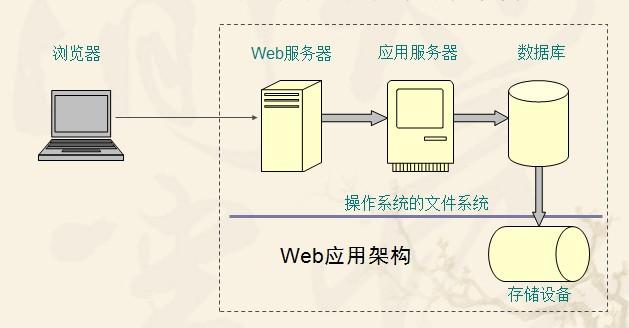Java 中常用緩存Cache機制的實現
作者:shangxuetang
所謂緩存,就是將程序或系統經常要調用的對象存在內存中,一遍其使用時可以快速調用,不必再去創建新的重復的實例。這樣做可以減少系統開銷,提高系統效率。
Cache
所謂緩存,就是將程序或系統經常要調用的對象存在內存中,一遍其使用時可以快速調用,不必再去創建新的重復的實例。這樣做可以減少系統開銷,提高系統效率。
緩存主要可分為二大類:
一、通過文件緩存,顧名思義文件緩存是指把數據存儲在磁盤上,不管你是以XML格式,序列化文件DAT格式還是其它文件格式;
二、內存緩存,也就是實現一個類中靜態Map,對這個Map進行常規的增刪查.
代碼如下 :
- package lhm.hcy.guge.frameset.cache;
- import java.util.*;
- //Description: 管理緩存
- //可擴展的功能:當chche到內存溢出時必須清除掉最早期的一些緩存對象,這就要求對每個緩存對象保存創建時間
- public class CacheManager {
- private static HashMap cacheMap = new HashMap();
- //單實例構造方法
- private CacheManager() {
- super();
- }
- //獲取布爾值的緩存
- public static boolean getSimpleFlag(String key){
- try{
- return (Boolean) cacheMap.get(key);
- }catch(NullPointerException e){
- return false;
- }
- }
- public static long getServerStartdt(String key){
- try {
- return (Long)cacheMap.get(key);
- } catch (Exception ex) {
- return 0;
- }
- }
- //設置布爾值的緩存
- public synchronized static boolean setSimpleFlag(String key,boolean flag){
- if (flag && getSimpleFlag(key)) {//假如為真不允許被覆蓋
- return false;
- }else{
- cacheMap.put(key, flag);
- return true;
- }
- }
- public synchronized static boolean setSimpleFlag(String key,long serverbegrundt){
- if (cacheMap.get(key) == null) {
- cacheMap.put(key,serverbegrundt);
- return true;
- }else{
- return false;
- }
- }
- //得到緩存。同步靜態方法
- private synchronized static Cache getCache(String key) {
- return (Cache) cacheMap.get(key);
- }
- //判斷是否存在一個緩存
- private synchronized static boolean hasCache(String key) {
- return cacheMap.containsKey(key);
- }
- //清除所有緩存
- public synchronized static void clearAll() {
- cacheMap.clear();
- }
- //清除某一類特定緩存,通過遍歷HASHMAP下的所有對象,來判斷它的KEY與傳入的TYPE是否匹配
- public synchronized static void clearAll(String type) {
- Iterator i = cacheMap.entrySet().iterator();
- String key;
- ArrayList arr = new ArrayList();
- try {
- while (i.hasNext()) {
- java.util.Map.Entry entry = (java.util.Map.Entry) i.next();
- key = (String) entry.getKey();
- if (key.startsWith(type)) { //如果匹配則刪除掉
- arr.add(key);
- }
- }
- for (int k = 0; k < arr.size(); k++) {
- clearOnly(arr.get(k));
- }
- } catch (Exception ex) {
- ex.printStackTrace();
- }
- }
- //清除指定的緩存
- public synchronized static void clearOnly(String key) {
- cacheMap.remove(key);
- }
- //載入緩存
- public synchronized static void putCache(String key, Cache obj) {
- cacheMap.put(key, obj);
- }
- //獲取緩存信息
- public static Cache getCacheInfo(String key) {
- if (hasCache(key)) {
- Cache cache = getCache(key);
- if (cacheExpired(cache)) { //調用判斷是否終止方法
- cache.setExpired(true);
- }
- return cache;
- }else
- return null;
- }
- //載入緩存信息
- public static void putCacheInfo(String key, Cache obj, long dt,boolean expired) {
- Cache cache = new Cache();
- cache.setKey(key);
- cache.setTimeOut(dt + System.currentTimeMillis()); //設置多久后更新緩存
- cache.setValue(obj);
- cache.setExpired(expired); //緩存默認載入時,終止狀態為FALSE
- cacheMap.put(key, cache);
- }
- //重寫載入緩存信息方法
- public static void putCacheInfo(String key,Cache obj,long dt){
- Cache cache = new Cache();
- cache.setKey(key);
- cache.setTimeOut(dt+System.currentTimeMillis());
- cache.setValue(obj);
- cache.setExpired(false);
- cacheMap.put(key,cache);
- }
- //判斷緩存是否終止
- public static boolean cacheExpired(Cache cache) {
- if (null == cache) { //傳入的緩存不存在
- return false;
- }
- long nowDt = System.currentTimeMillis(); //系統當前的毫秒數
- long cacheDt = cache.getTimeOut(); //緩存內的過期毫秒數
- if (cacheDt <= 0||cacheDt>nowDt) { //過期時間小于等于零時,或者過期時間大于當前時間時,則為FALSE
- return false;
- } else { //大于過期時間 即過期
- return true;
- }
- }
- //獲取緩存中的大小
- public static int getCacheSize() {
- return cacheMap.size();
- }
- //獲取指定的類型的大小
- public static int getCacheSize(String type) {
- int k = 0;
- Iterator i = cacheMap.entrySet().iterator();
- String key;
- try {
- while (i.hasNext()) {
- java.util.Map.Entry entry = (java.util.Map.Entry) i.next();
- key = (String) entry.getKey();
- if (key.indexOf(type) != -1) { //如果匹配則刪除掉
- k++;
- }
- }
- } catch (Exception ex) {
- ex.printStackTrace();
- }
- return k;
- }
- //獲取緩存對象中的所有鍵值名稱
- public static ArrayList getCacheAllkey() {
- ArrayList a = new ArrayList();
- try {
- Iterator i = cacheMap.entrySet().iterator();
- while (i.hasNext()) {
- java.util.Map.Entry entry = (java.util.Map.Entry) i.next();
- a.add((String) entry.getKey());
- }
- } catch (Exception ex) {} finally {
- return a;
- }
- }
- //獲取緩存對象中指定類型 的鍵值名稱
- public static ArrayList getCacheListkey(String type) {
- ArrayList a = new ArrayList();
- String key;
- try {
- Iterator i = cacheMap.entrySet().iterator();
- while (i.hasNext()) {
- java.util.Map.Entry entry = (java.util.Map.Entry) i.next();
- key = (String) entry.getKey();
- if (key.indexOf(type) != -1) {
- a.add(key);
- }
- }
- } catch (Exception ex) {} finally {
- return a;
- }
- }
- }
- package lhm.hcy.guge.frameset.cache;
- public class Cache {
- private String key;//緩存ID
- private Object value;//緩存數據
- private long timeOut;//更新時間
- private boolean expired; //是否終止
- public Cache() {
- super();
- }
- public Cache(String key, Object value, long timeOut, boolean expired) {
- this.key = key;
- this.value = value;
- this.timeOut = timeOut;
- this.expired = expired;
- }
- public String getKey() {
- return key;
- }
- public long getTimeOut() {
- return timeOut;
- }
- public Object getValue() {
- return value;
- }
- public void setKey(String string) {
- key = string;
- }
- public void setTimeOut(long l) {
- timeOut = l;
- }
- public void setValue(Object object) {
- value = object;
- }
- public boolean isExpired() {
- return expired;
- }
- public void setExpired(boolean b) {
- expired = b;
- }
- }
- //測試類,
- class Test {
- public static void main(String[] args) {
- System.out.println(CacheManager.getSimpleFlag("alksd"));
- // CacheManager.putCache("abc", new Cache());
- // CacheManager.putCache("def", new Cache());
- // CacheManager.putCache("ccc", new Cache());
- // CacheManager.clearOnly("");
- // Cache c = new Cache();
- // for (int i = 0; i < 10; i++) {
- // CacheManager.putCache("" + i, c);
- // }
- // CacheManager.putCache("aaaaaaaa", c);
- // CacheManager.putCache("abchcy;alskd", c);
- // CacheManager.putCache("cccccccc", c);
- // CacheManager.putCache("abcoqiwhcy", c);
- // System.out.println("刪除前的大小:"+CacheManager.getCacheSize());
- // CacheManager.getCacheAllkey();
- // CacheManager.clearAll("aaaa");
- // System.out.println("刪除后的大小:"+CacheManager.getCacheSize());
- // CacheManager.getCacheAllkey();
- }
- }
責任編輯:張偉
來源:
安度博客



































